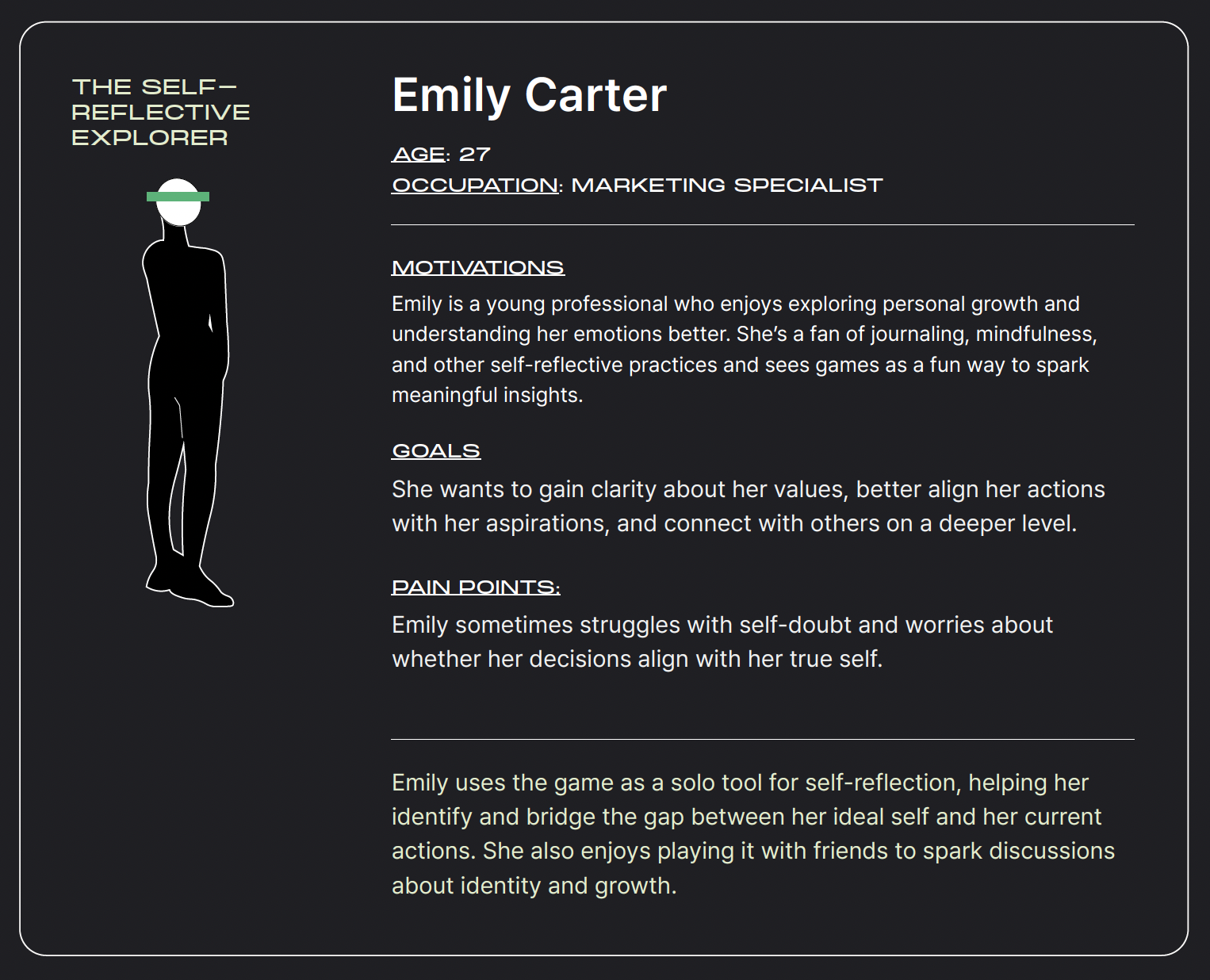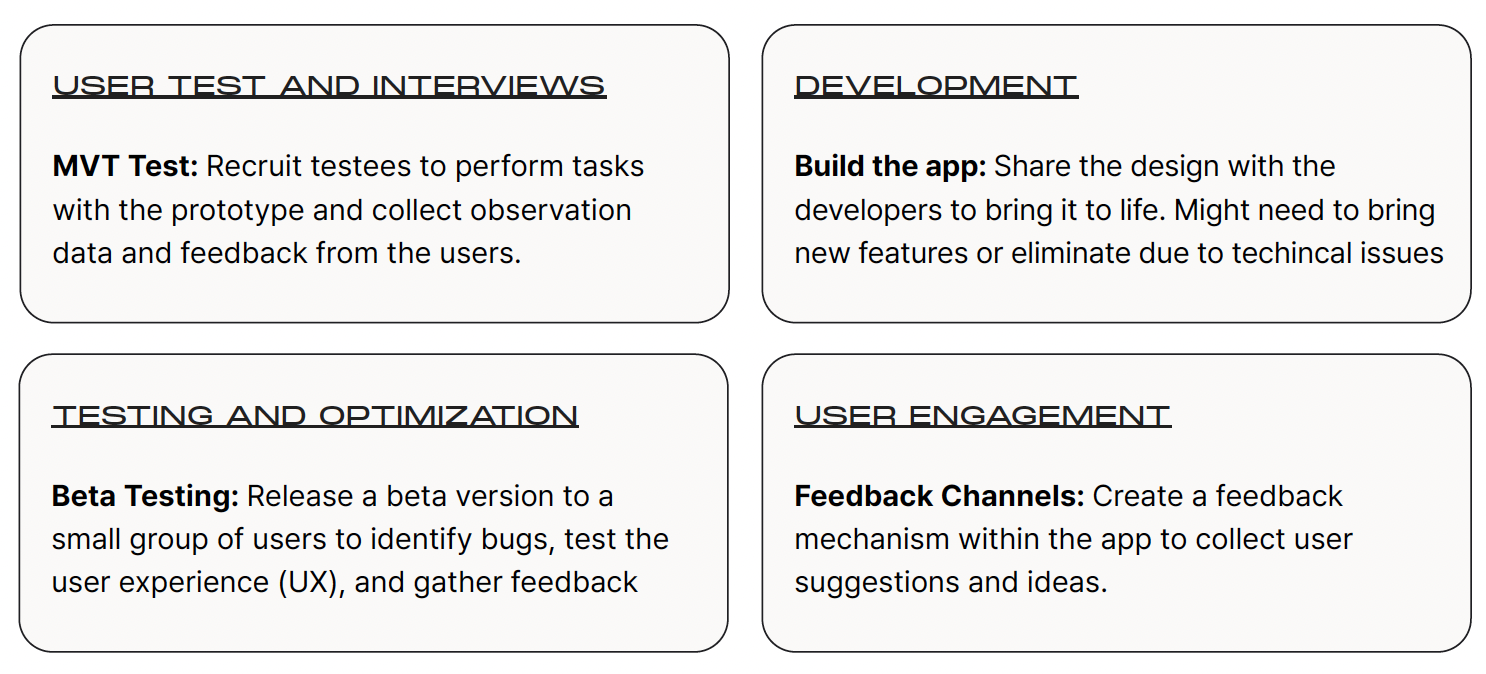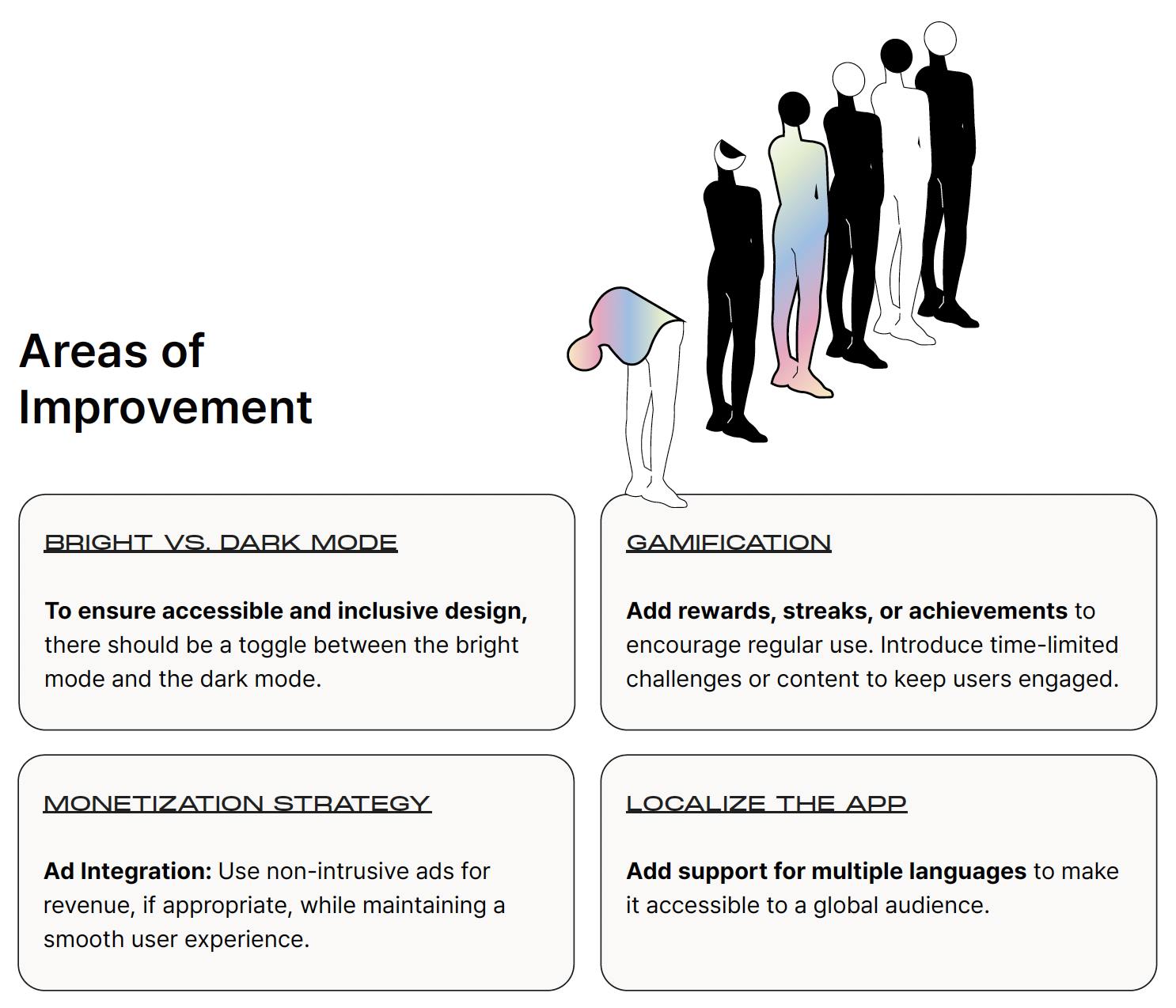Wannawould

Role
Graphic designer
Graphic designer
Timeline
Jan 2021 – April 2021
Jan 2021 – April 2021
Responsibilities
Design Thinking
Brand Identity
Product Design
User Research
Art Direction
Game Design
Design Thinking
Brand Identity
Product Design
User Research
Art Direction
Game Design
Tools
Figma
Adobe Photoshop
Adobe Illustrator
Adobe InDesign
Figma
Adobe Photoshop
Adobe Illustrator
Adobe InDesign
Project Overview
WANNAWOULD is a card game designed to help players reflect on their true selve versus their ideal personas. Players select responses to various scenarios — both their ideal choice and their realistic one. By comparing these answers, the game highlights
the gap between aspirations and reality, encouraging self-awareness and proactiv engagement with life. It fosters the realization that there are no right or wrong answers, only differences in perspective, where one person’s choice might be another’s ideal.
Whether for fun or deeper introspection, WANNAWOULD offers a platform for self discovery and growth.

Challenges
Creating a card game that offers a platform for self-discovery and growth and transforming the game into an app that’s easy and fun.
Opportunity
Creating a tool for meaningful self-discovery, fostering conversations, and expanding with customizable themes for diverse audiences.
Process
1. Research
2. Synthesis
3. Brand
4. Card game
5. Game app
6. Conclusion
Project Background
I was inspired by how Frida Kahlo, the renowned Mexican painter, portrayed herself so differently in two of her self-portraits. During her marriage to Diego (fig. 1), she depicted herself adorned with flowers, vibrant clothing, and accessories (fig. 2), possibly reflecting either the persona she adopted for her husband or the image Diego preferred. After their divorce (fig. 3), her self-portrait changed dramatically — she held scissors, symbolizing cutting off her hair, and wore dull suits, traditionally men’s attire, signifying freedom from the persona imposed by her marriage.
This transformation highlights how interactions, environments, and circumstances shape how we present ourselves. This concept inspired me to explore the idea of comparing idealized personas with realistic or even compromised ones.
I started from Jung’s idea that everyone in the society wears a social mask in our interaction. Through comparing the kinds of ‘masks’ people wear, I might figure out what I thought was a ‘negative persona’ might actually be an ‘ideal persona’ to someone else with differenct values.

Research
CARL JUNG’S ‘THE PERSONA’ MINDMAP BASED ON THEORIES
• The social mask that each of us wear in our interaction with others in the society;
• The personality that we try to portray to others;
• A functional complex that comes into existence for reasons of adaptation or personal convenience.
CO-EXISTENCE: ERIC BURNE’S TRANSACTIONAL ANALYSIS
• All relationship is transactional
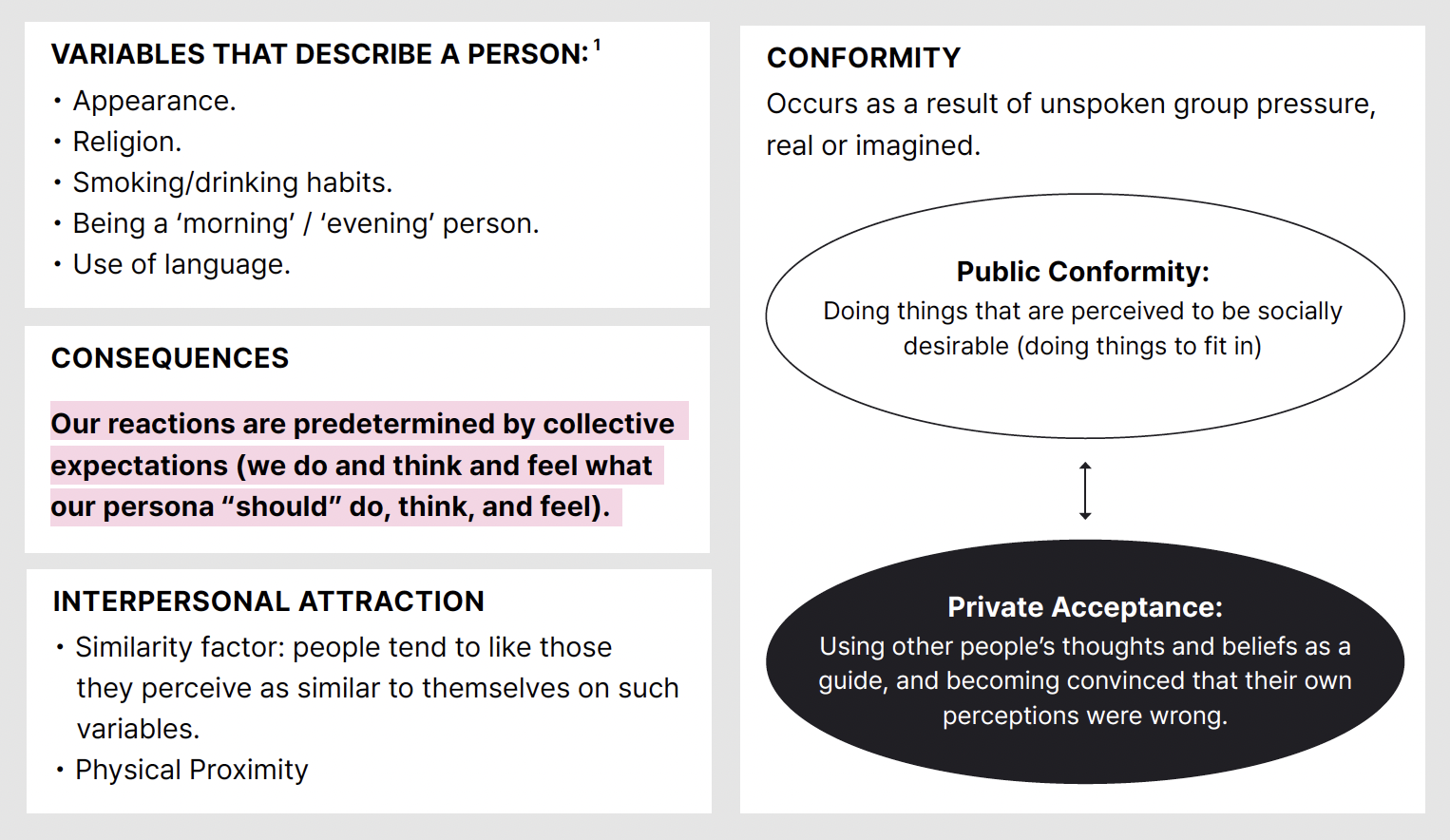
MINDMAP BASED ON THEORIES

Synthesis
Hypothesis
1.
Provide a chance to become conscious of who we are, including the strengths and weaknesses.
When the distinctions become clear and noticed, player can become aware that they can choose the extent to which they identify themselves with a persona.
= Make better performance/choices.
2.
Provide a chance to really think about the ideal as oppose to the realistic responses under a series of given situations.
By actually choosing the responses and have them laid out physically, abstract concept of the self may become concrete and clear.
= In the form of game to make the matter rather enjoyable than serious.
User Persona
![]()
![]()
Design Solution
︎ Design goals in creating the game.
- Foster Self-Reflection: Create prompts and mechanics that encourage players to think critically about their behavior, values, and aspirations.
- Encourage Open Conversations: Facilitate meaningful discussions between players by making the game engaging, inclusive, and non-judgmental.
- Make It Accessible: Ensure the game is easy to learn and play, with clear instructions and relatable scenarios.
- Appeal to a Broad Audience: Design scenarios and responses that resonate with diverse demographics and cultural backgrounds.
- Balance Fun and Depth: Combine introspection with an entertaining and engaging gameplay experience.
- Scalability: Allow for future expansions or themed decks to keep the content fresh and adaptable to various contexts (e.g., relationships, career, personal growth).
︎ Design goals in translating the game into an app format.

Card Game
Question Breakdown




Game Mechanics
The game is basically choosing the ideal answer andthe realistic answer under a given situation. Then, you compare the answers to one another as well as to the other players’ answers. It can be a conversation starter, or a party game, or just a game when you play around with when you are bored. I had to figure out a way to remove the weight of the seriousness in my research and thesis idea and integrate it as a game that is enjoyable for everyone. Following is the game mechanics.

Brand

Card Design

Question Cards
2.5 in x 3.5 in
 Joker Cards
Joker Cards2.5 in x 3.5 in

Ideal Cards
2.5 in x 3.5 in
 Realistic Cards
Realistic Cards2.5 in x 3.5 in

Marketing Materials

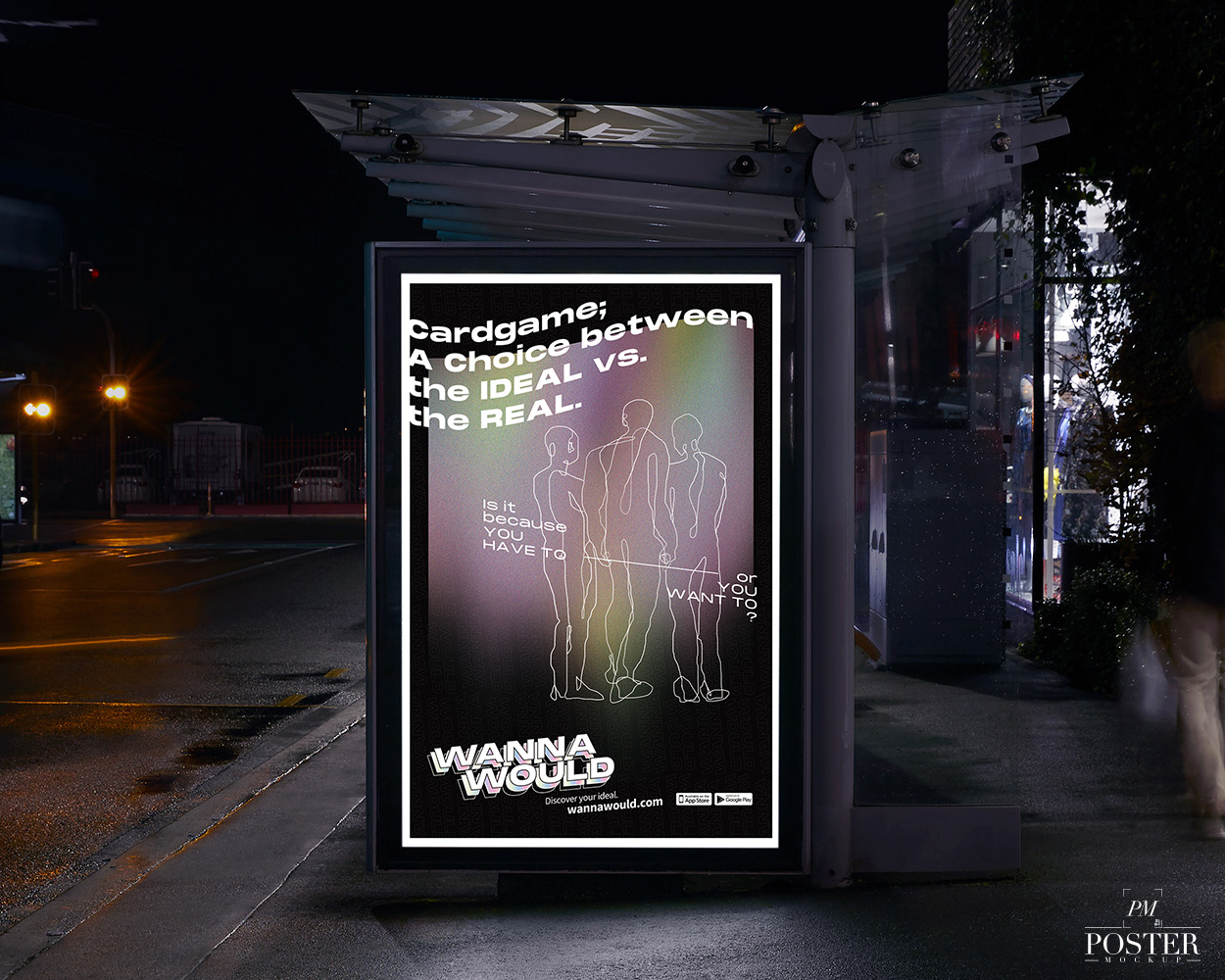

Packaging Concepts
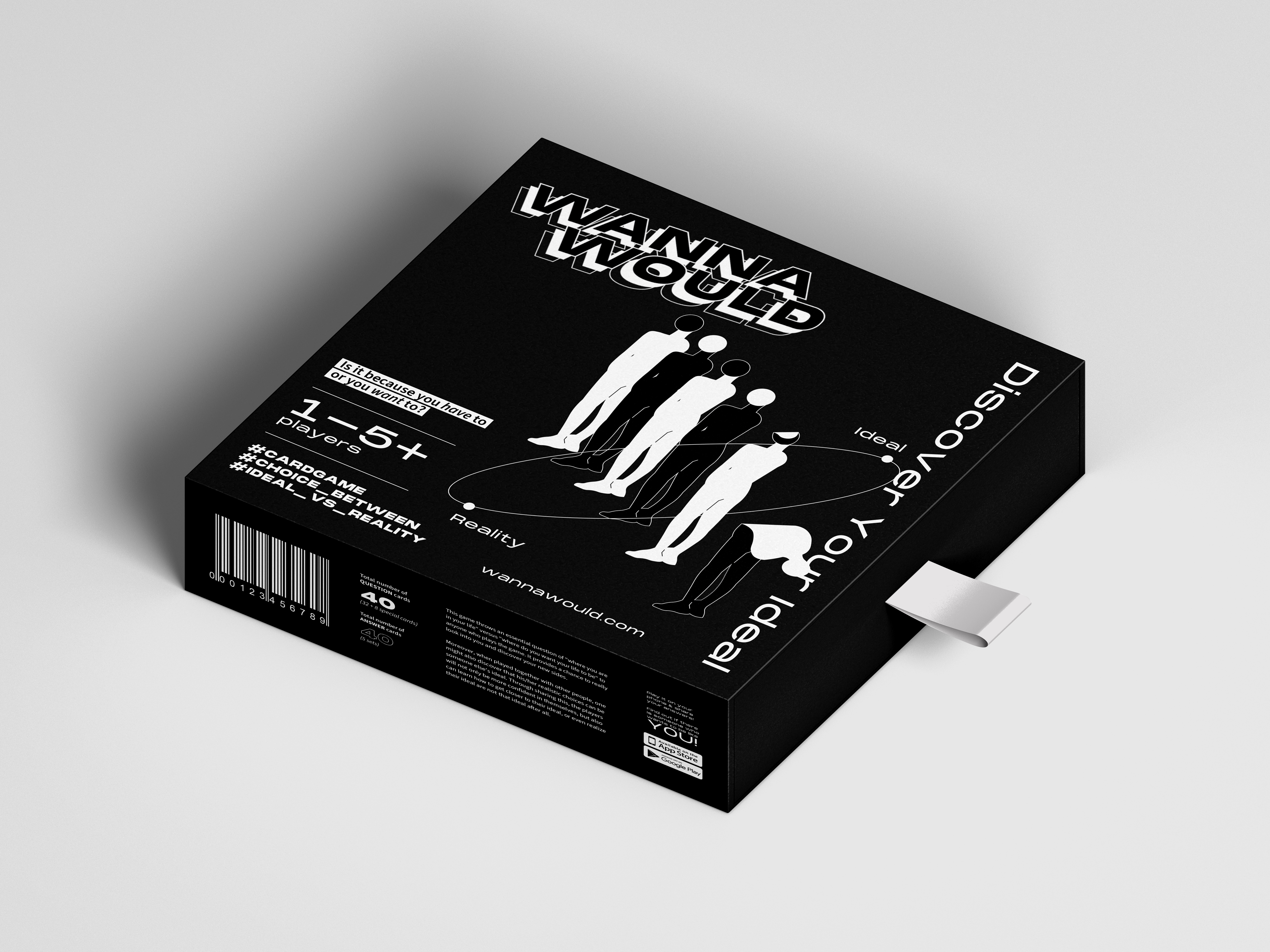
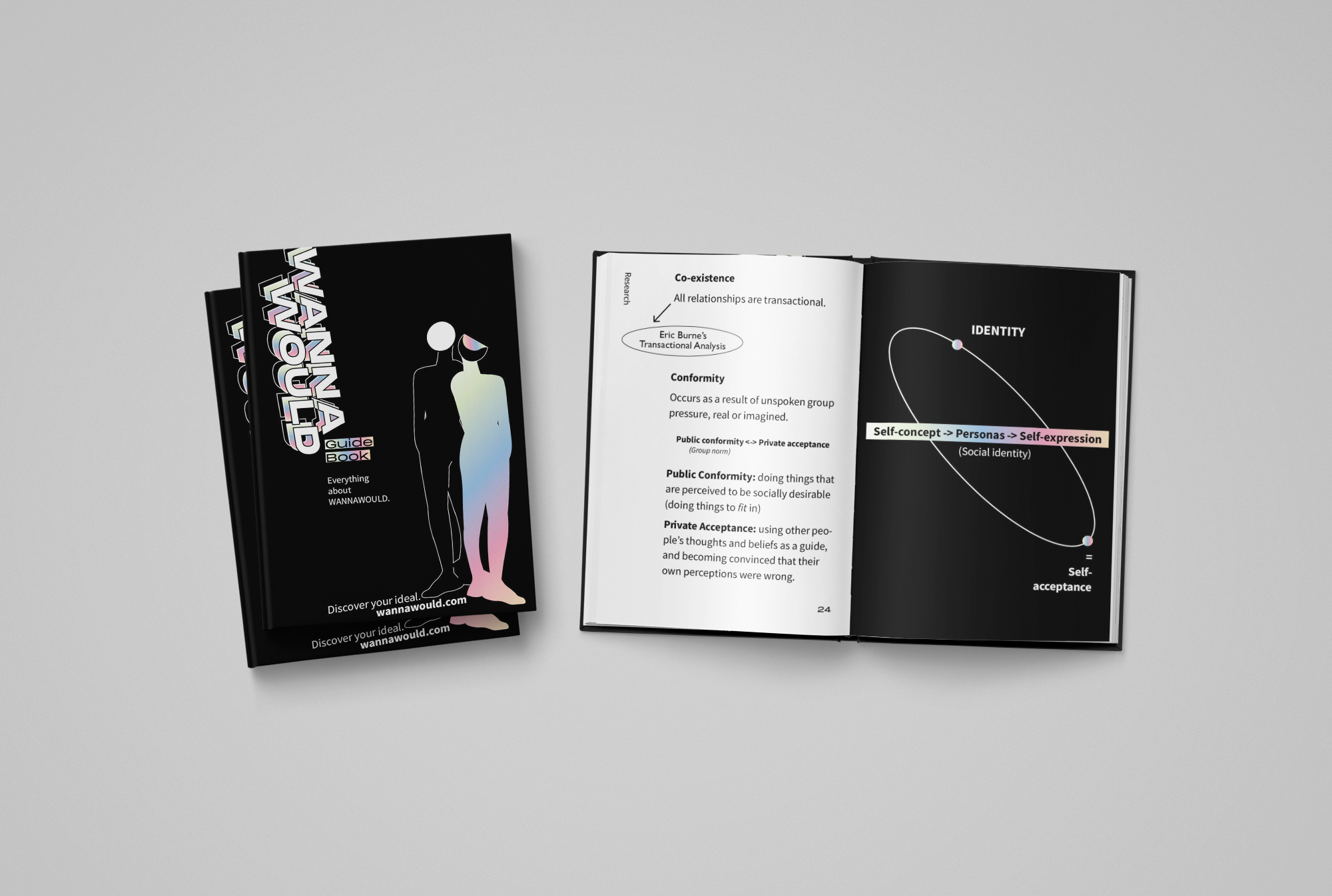


Design Solution
Design Goals
- Solo and Social Play Modes: Include options for solo introspection or multiplayer modes to encourage interaction and sharing among users.
- Secure Sharing Options: Enable users to share their responses with friends securely or invite others to play, fostering connection while maintaining privacy.
- Dynamic Content Delivery: Randomize scenarios and tailor prompts based on user preferences or demographics for a more personalized experience.
- Gamification Elements: Introduce achievements, rewards, or streaks to keep users motivated and engaged over time.
- Community Building: Create features such as leaderboards, discussion forums, or adding custom questions & answers for users to connect and exchange insights.


Information Architecture
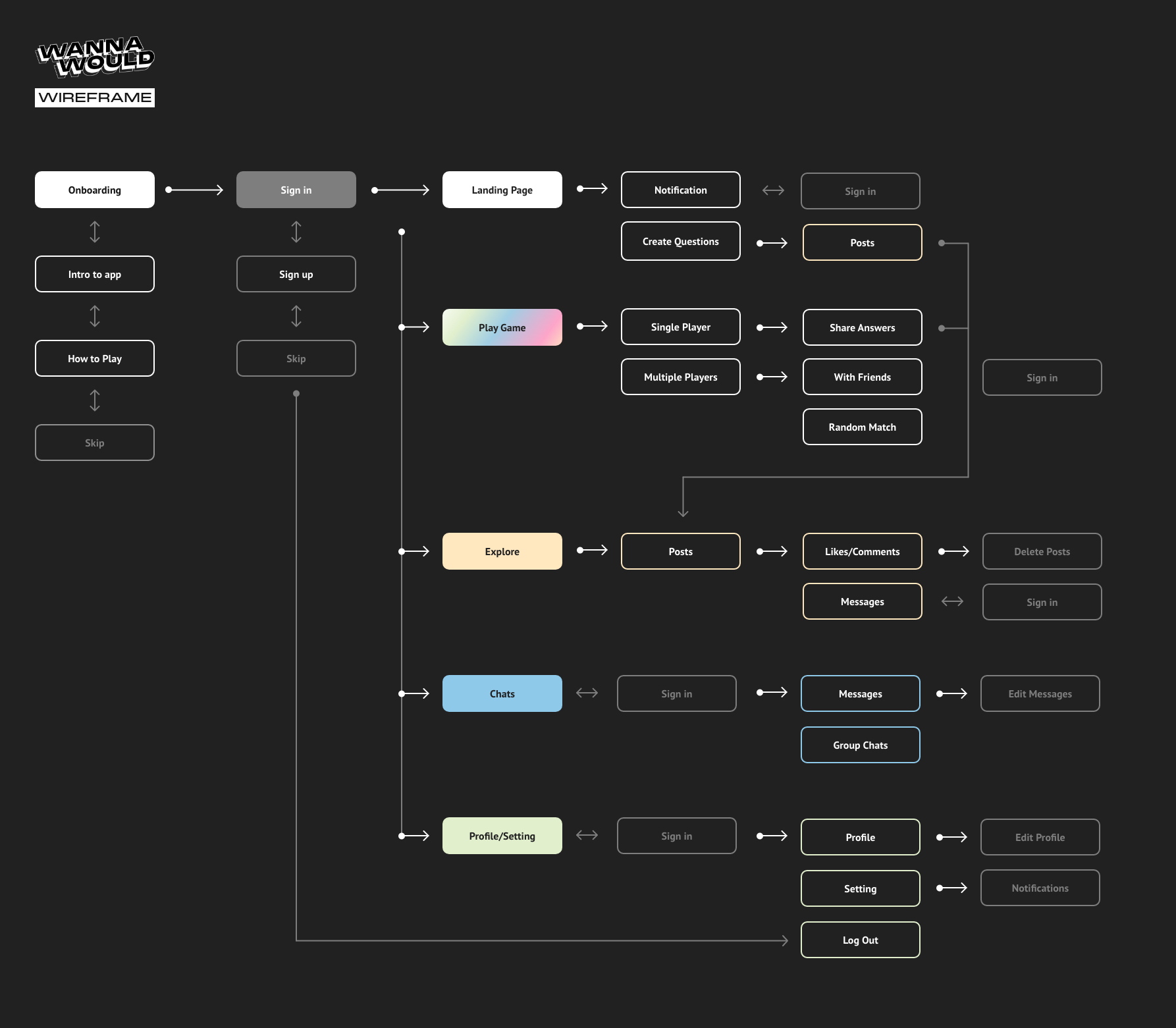
Stylesheet
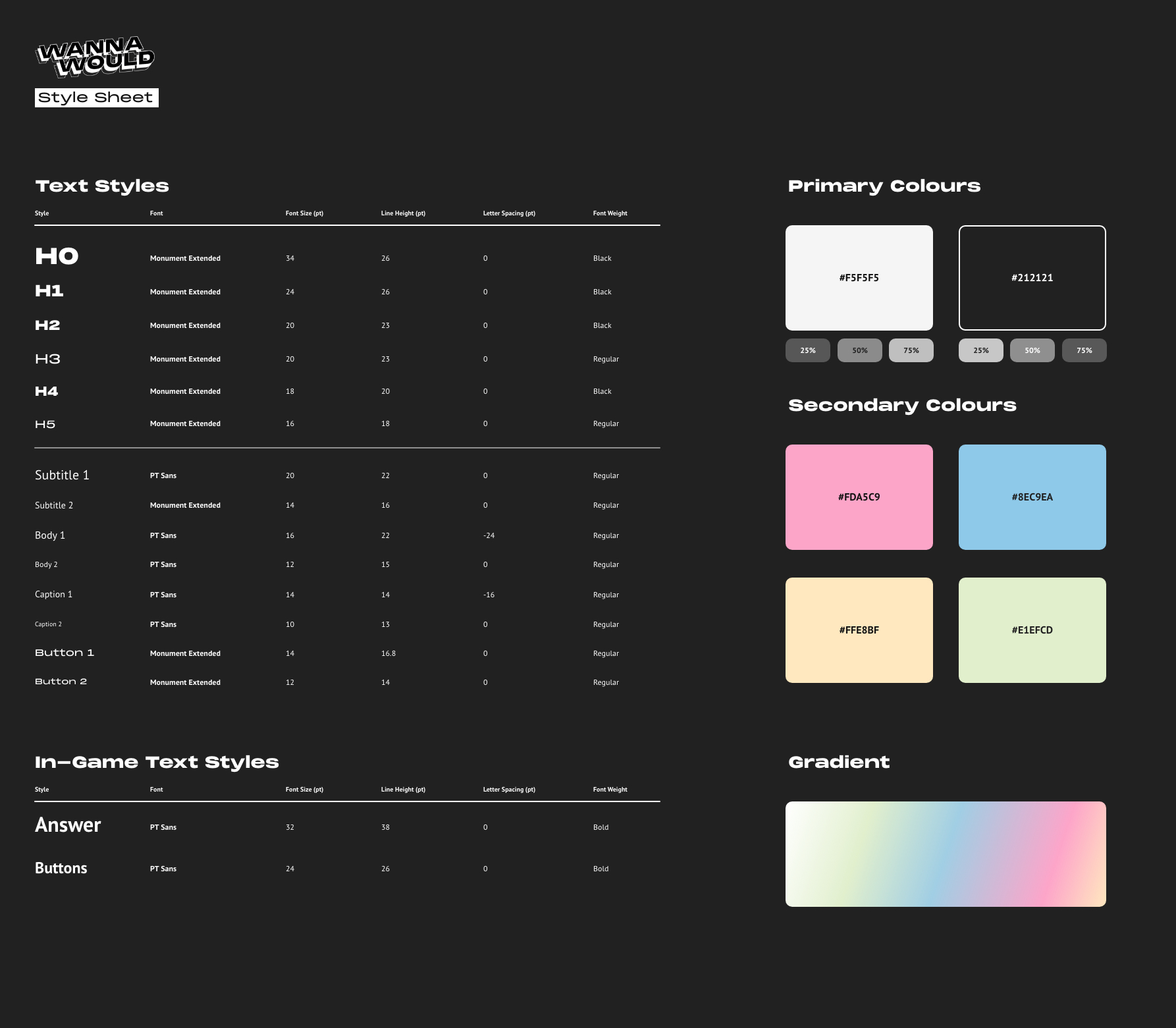
Prototype







Next Steps
![]()
![]()
Conclusion
The process of creating both a physical card game and its digital app counterpart is a transformative journey that involves creativity, technical problem-solving, and deep empathy for the player experience. It’s not just about building a product, but about crafting something that resonates with others, invites reflection, and brings people together.
Reflection

References
Academy of Ideas. Introduction to Carl Jung - Individuation, the Persona, the Shadow, and the Self.
YouTube, YouTube, 13 Feb. 2016, youtu.be/uhAeXyVDDTc.
Bernstein, Douglas A. Psychology: Foundations and Frontiers. South-Western, 2016.
Description of Transactional Analysis and Games by Dr. Eric Berne Md. 28 Jan. 2013,
www.ericberne.com/transactional-analysis/.
“Function Pairs.” The Myers & Briggs Foundation, The Myers & Briggs Foundation,
www.myersbriggs.org/my-mbti-personality-type/understanding-mbti-type-dynamics/function-pairs.htm.
Luton, Frith. “The Persona as Social Mask – Trap of a Successful Persona.” FrithLuton.com, frithluton.com/articles/persona/.
“MBTI® Basics.” The Myers & Briggs Foundation, The Myers & Briggs Foundation, www.myersbriggs.org/my-mbti-personality-type/mbti-basics/.
Miller, Aidan. “Function Pairs and Learning Styles.” Psychometrics, Psychometrics Canada, 29 Jan. 2016, www.psychometrics.com/mbtiblog/practitioners-corner/function-pairs-andlearning-styles/.
Morad, Natali. “How to Use Psychology to Communicate Better and Avoid Conflict.” Medium, Medium, 7 Mar. 2018, medium.com/@NataliMorad/how-to-communicate-better-withtransactional-analysis-d0d32f9d50da.
“Transactional Analysis.” GoodTherapy, GoodTherapy, 5 Sept. 2016, www.goodtherapy.org/learn-about-therapy/types/transactional-analysis.


